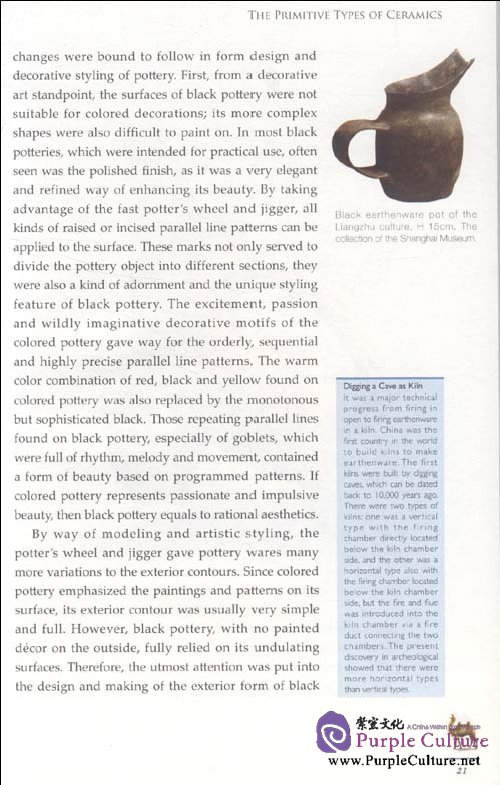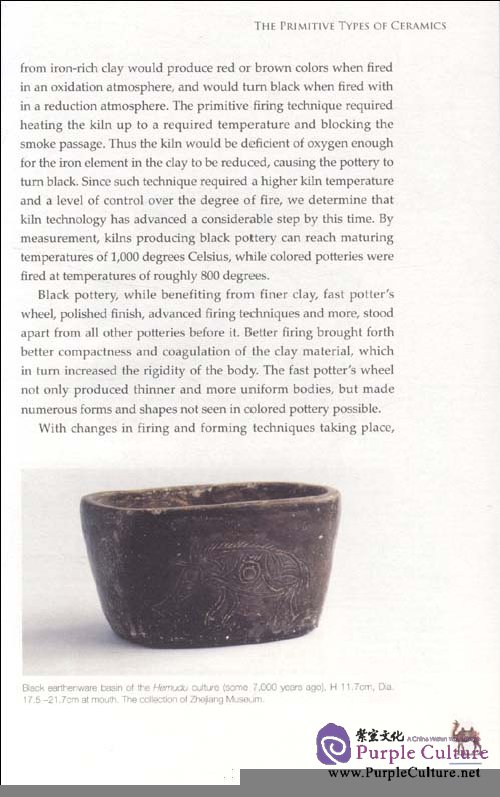Sample Pages Preview


Among
primitive Chinese potteries, aside from colored potteries, the black
earthenware had also attained considerable refinement in technique and
artistically. Black pottery first appeared around 2,000 BC, and was
based on the colored pottery. It was during the transitional period from
primitive society to slave society in China that black pottery was
created. Be it religious or ancestral rituals, everything at that time
was developing towards a more standardized and systematic direction. The
members of society had a clearer differentiation of social status, and
political and economic interests also needed to be systematically
distributed among them.
PrefaceThe introduction of
pottery ware signified man's subjugation of water, fire and earth. It
was only possible when a certain level of technology has been attained
and there was the power to transform the natural material environment.
The process from emergence to application of pottery marked important
milestones in the course of the refinement of living for humankind;
incessantly expanding man's capacity to create applications using
technology and wisdom. Ultimately, artistic objects with both
functionality and aesthetic value were created.

